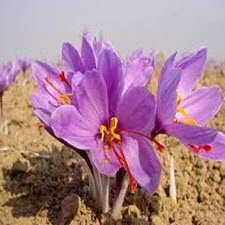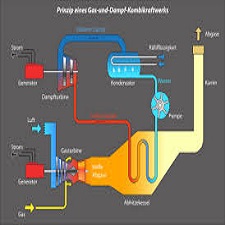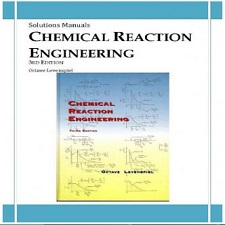توضیحات
چکیده
به منظور ارزیابی واکنش گیاه زعفران به کودهای مختلف دامی، زیستی و شیمیایی آزمایشی به صورت کرت های خرد شده در قالب طرح بلوک های کامل تصادفی با سه تکرار در مزرعه تحقیقاتی جهاد کشاورزی گناباد طی سال های زراعی ۱۳۹۴-۹۵ و ۱۳۹۵-۹۶ صورت گرفت. عامل اصلی بصورت کاربرد کود گاوی به میزان ۶۰ تن در هکتار و عدم مصرف کود و عامل فرعی متشکل از تیمارهای: شاهد (عدم مصرف کود)، نیتروکسین (۵ لیتر در هکتار)، بیوفسفر (۳ لیتر در هکتار)، بیوسولفور (۵ کیلوگرم در هکتار)، اسید هیومیک (۱۰ کیلوگرم در هکتار) و کود شیمیایی (به ترتیب ۱۵۰ ،۱۰۰ و ۱۰۰ کیلوگرم در هکتار از منابع اوره، سوپر فسفات تریپل و سولفات پتاسیم) بود. نتایج آزمایش مشخص کرد اثر متقابل تیمارهای کود گاوی و کودهای بیولوژیکی و شیمیایی بر صفات عملکرد گل تر، کلاله تر و کلاله خشک معنی دار بود. بیشترین عملکرد گل تر (۱۸۱ کیلوگرم در هکتار) از اعمال کود بیوفسفر همراه با مصرف ۶۰ تن در هکتار کود گاوی حاصل شد. عملکرد کلاله تر در تیمار کود شیمیایی تحت شرایط مصرف کود گاوی بیشترین افزایش (میانگین عملکرد ۱۰۴۰۵ گرم در متر مربع) را نشان داد. درحالی که عملکرد کلاله خشک درنتیجه مصرف بیوفسفر حداکثر مقادیر (۵۳۵۱ گرم در هکتار) را حاصل کرد. اثر کود گاوی بر صفات بنه معنی دار شد. تعداد بنه در واحد سطح و عملکرد بنه افزایش ۱۹ درصدی را در اثر مصرف کود گاوی نسبت به تیمار شاهد در سال دوم نشان دادند. در بین تیمارهای کود بیولوژیکی و شیمیایی، بیشترین تعداد بنه (۴۴۰ بنه در متر مربع) و عملکرد بنه (۴۴۰۱ کیلوگرم در متر مربع) درنتیجه اعمال کود بیوفسفر بدست آمد. بر اساس نتایج بدست آمده، مصرف کود دامی توصیه شده بصورت تلفیقی همراه با کودهای بیولوژیکی بخصوص کود بیوفسفر در شرایط اقلیمی و خاکی مشابه با محل این آزمایش توصیه می گردد.
ABSTRACT
In order to evaluate the reaction of saffron plant to various fertilizers, livestock, biological and chemical fertilizers, a split plot design was conducted in a randomized complete block design with three replications at Gonabad Agricultural Jihad research farm during 1995-1998 and 1995-1996. . The main factor was the application of a cow manure of 60 tons per hectare and no fertilizer application and a sub-factor consisting of: control (no fertilizer application), nitroxin (5 liters per hectare), biofuels (3 liters per hectare), biosulfur (5 kg Ha), humic acid (10 kg ha-1) and chemical fertilizer (150, 100 and 100 kg ha-1 of urea, triple superphosphate and potassium sulfate respectively). The results of the experiment showed that interaction between cow manure and biological and chemical fertilizers was significant on flowering, peppermint, and dry stigmata. The highest flower yield (181 kg ha-1) was obtained from the application of biofertilizer fertilizer with 60 tons per hectare of cattle manure. The results showed that the yield of the spikelet in the fertilizer application under the conditions of cattle manure was the highest (mean yield 10405 g / m2). While the yield of dried sturgeon as a result of the use of biofossers reached the maximum values (5351 g ha-1). The effect of cow manure on bone traits was significant. The number of corms per unit area and bone yield increased by 19% due to the use of cattle in comparison with the control in the second year. Among the biological and chemical fertilizer treatments, the highest number of mastic (440 masks per square meter) and cedar yield (4401 kg / m2) were obtained as a result of the application of biofertilizer fertilizer. According to the results, the recommended fertilizer application is recommended in combination with biological fertilizers, especially biofertilizer, in climatic and earth conditions similar to that of the test site.
Year: ۲۰۱۹
Publisher : Quarterly Journal of Agriculture and Technology of Saffron
By : Mohammad Behzad Amiri and Yasser Ismaili
File Information: English Language/ 15 Page / size: 617 KB
Only site members can download free of charge after registering and adding to the cart
سال : ۱۳۹۸
ناشر : فصلنامه زراعت و فناوری زعفران
کاری از : محمدبهزاد امیری و یاسر اسماعیلیان
اطلاعات فایل : زبان فارسی / 15 صفحه / حجم : KB 617





![Gas hydrate formation inhibition using[taliem.ir]](https://taliem.ir/wp-content/uploads/Gas-hydrate-formation-inhibition-usingtaliem.ir_.jpg)




نقد و بررسیها
هنوز بررسیای ثبت نشده است.